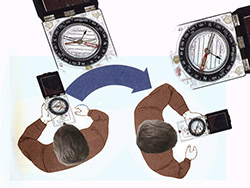 Using a Compass:
Using a Compass:
Applying a Map Bearing to the Field
(Map to Field)
By Ron Watters, Professor Emeritus of Outdoor Education, Idaho State University
This is the continuation of a several part series on compass use. If you haven't already, you'll want to start on the introductory page found here: Compass Technique. This page is about how you can apply a bearing that you've taken on the map to use in the field.
(Or, if you'd rather pick from a list of topics, you'll find it here: Topic Index.)
Map to Field
We have covered how to take a map bearing here. Now that we have the map bearing, we need to use it. The following information covers how to apply a map bearing to the field - or, to keep things short, we'll say "map to field."
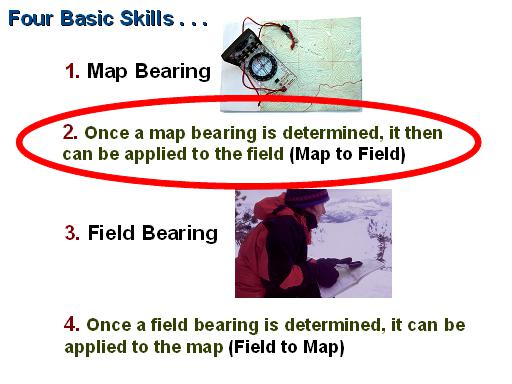
To go from map to field, we'll align the compass needle with the engraved arrow on the compass (a diagram showing the parts of a compass is found here). Here's what it looks like when the compass needle is aligned:
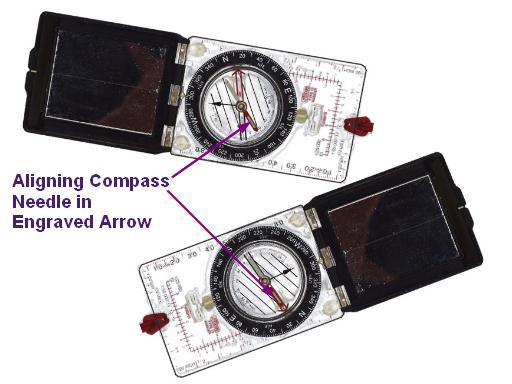
You can align the compass needle by turning the compass dial - or by holding the compass and turning your body. When applying a map bearing to the field, you want to align the needle by turning your body as shown below:
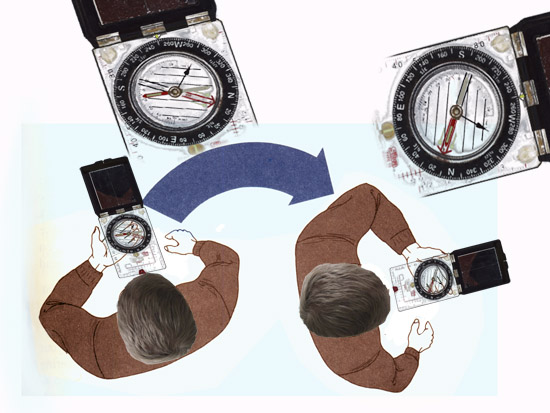
After turning your body, look down the "sighting line" on the mirror. (If you don't have a mirror, look down the "direction of travel arrow.") The destination point from your map bearing (the "To" point) will be in line with the sighting line (or travel arrow.)
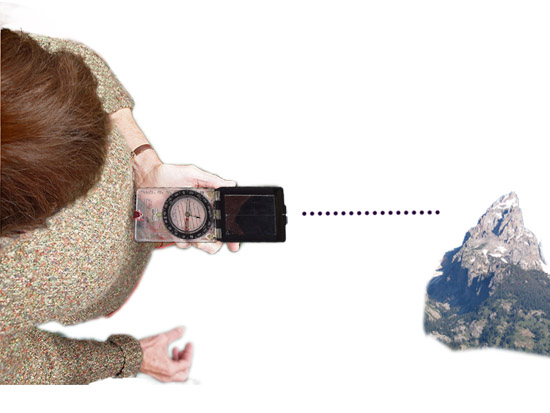
In the map bearing example, we had taken a map bearing from the top of a hill to a water tank across the valley. Using the map-to-field technique, we would be able to stand on top of the hill, look down the sighting mirror and see the tank in the distance.
Map bearings are used to find features shown on the map - such as finding the water tank. Mostly, of course, you'll be using map bearings to find land features such lakes, ridges, mountain peaks and other natural landforms.
Map bearings are also used when you need to travel from one point to a destination point. When travelling, you sight on nearby features and move from one to another to stay in a straight line.
The process goes like this: you begin by determining the map bearing between the two points, and, then in the field, you turn your body until the compass needle lines up with the engraved arrow. You sight down the "sighting line" to a tree or bush or some other object and walk towards it (more information on sighting). Then you sight on another tree. You'll keep doing this until reaching the destination.
NEXT: To go the next skill (taking a field bearing), click here.
(Or, if you'd rather pick from a list of topics, you'll find it here: Topic Index.)
[END]
